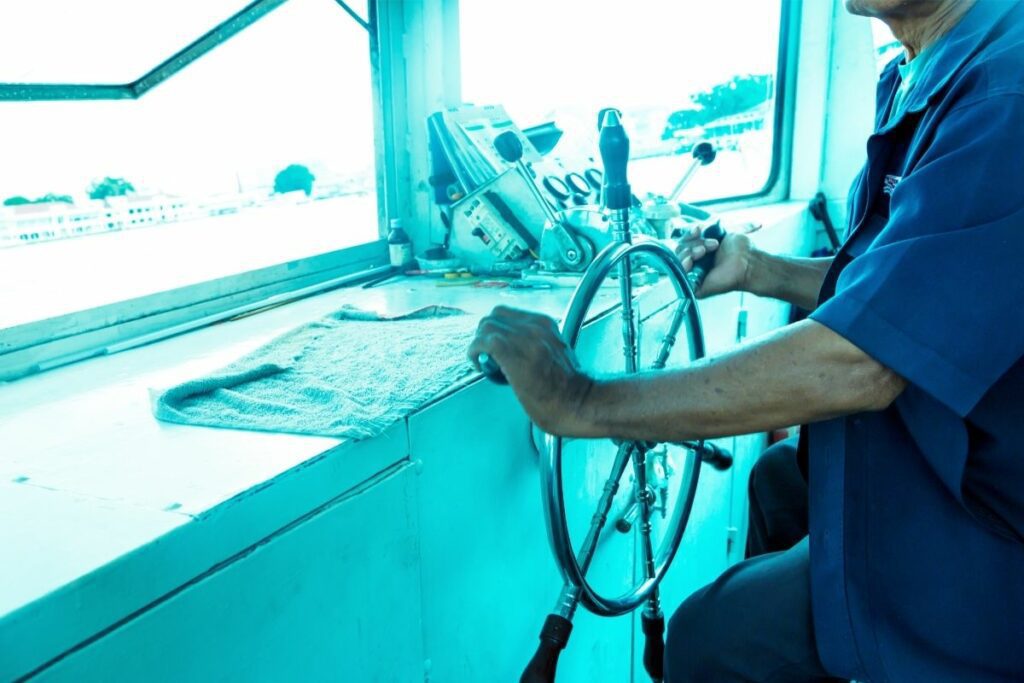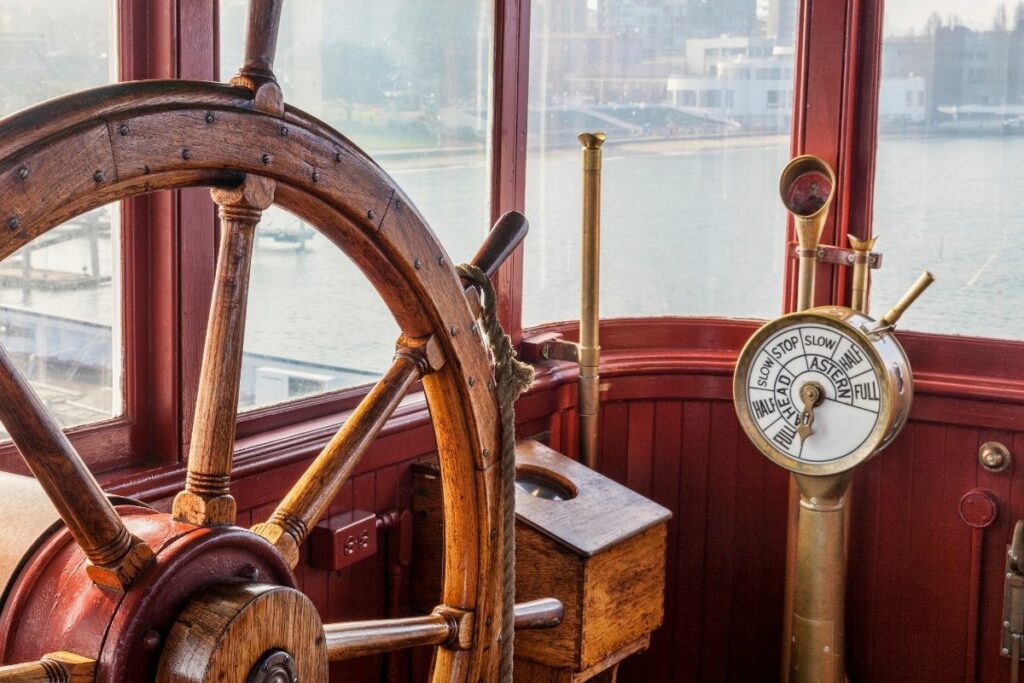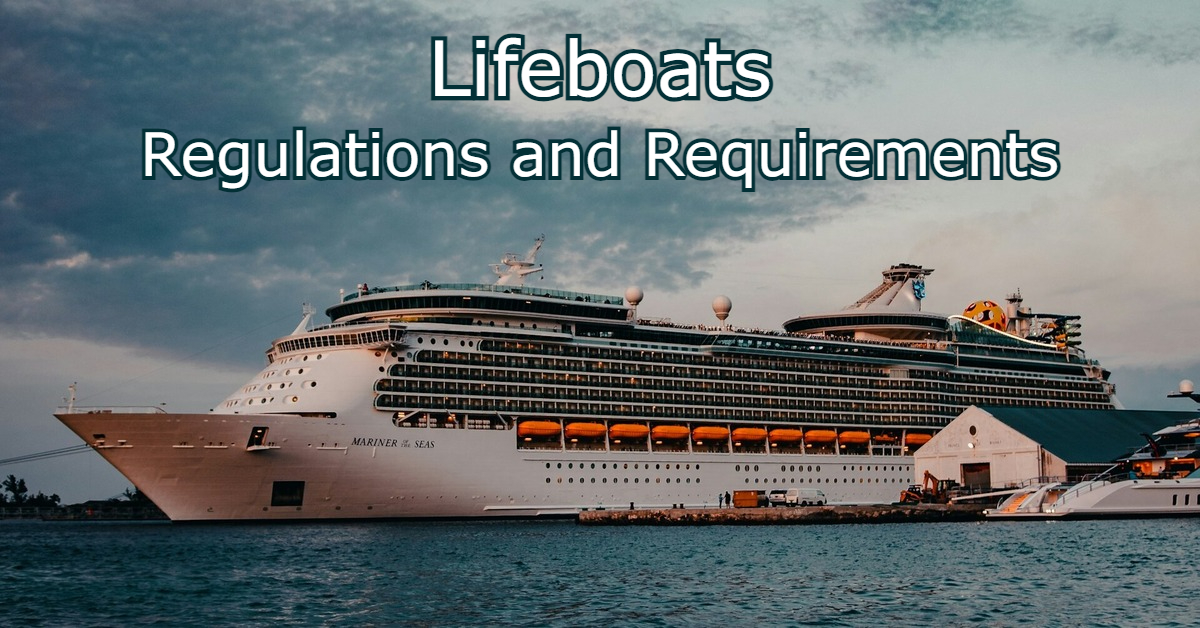The ocean is vast and unpredictable. There are many things that can go wrong when navigating through the sea. If you don’t know where you are going, you might get lost at sea.

There are some basic skills that you should master before heading out into the open waters. These include knowing how to read charts, using a compass, and understanding the basics of navigation.
But before anything else, the most important thing you need to master is steering. As a navigating officer, you won’t be able to go out onto the water without this skill.
Today we are looking at everything you need to know about steering a ship. The aim of this article is to give you the confidence to guide your ship along its path safely. Let’s get started!
What Does It Mean To Steer A Ship?
Steering is the act of moving a vessel from one place to another.
This means that it is necessary for a captain or navigator to have control over his/her ship so that he/she knows exactly where they want to end up.
You can steer a ship thanks to a movable rudder around the fore-aft line of the vessel. The larger the boat is, the larger the rudder will be.
The biggest rudders are moved thanks to either hydraulic or electro-hydraulic power.
As the rudder moves, the ship mimics the same movement at the same angle. As the boat moves, a stream of water is left behind it.
The rudder obstructs this stream, allowing the stream to move away from it. This then moves the stern in the opposite direction.
These two reactions are important to be able to move the boat. The forces need to be incredibly strong to force the boat around in one direction, which is why rudders often feature so much surface area to move as much water as possible.
Were Rudders Always The Way?
The rudder was first created in 1300 AD, but ships were still able to be steered before that. Instead of using the rudder, however, large oars were used.
These are similar to rudders in their action, but they were often much less durable and would snap often.
Using oars to steer also means that ships couldn’t travel that far away from land as the oars weren’t powerful enough.
This means of steering also prevented ships from being built to much larger sizes as the largest ships needed something stronger than oars to be able to steer it.
The invention of rudders allowed these largest ships to be moved with ease, and they helped boats of all sizes safely travel through rough waters.
The rudder helped man be able to explore the New World thanks to further travels.
Types Of Steering
Just like with steering a car, there are different types of steering when it comes to ships. You need to know all of these types when training to captain a boat so that you can be ready for any vessel that you might find yourself on.
Follow Up Steering
This type of steering allows the rudder to follow the ship. This is done by turning the wheel in the right direction, and the rudder turns accordingly. This makes sure that the ship stays straight and doesn’t turn too quickly.
It follows the same principle as when steering a car. Forward tires on a car turn in the same way that you turn the steering wheel. For example, turning the steering wheel to the left will turn the tires to the left as well.
When the steering wheel is turned back to the midpoint, the tires do the same and move the car straight forward. So, follow up steering allows you to move the vehicle in the exact same way that you turn the steering wheel.
It is perhaps the easiest method of steering a vehicle.
Non Follow Up Steering
This is a less common form of steering among vehicles. In non follow up steering, there is often a set of two knobs where the wheel should be.
One will be used to turn the rudder clockwise, and the other will be used to turn the rudder anti-clockwise.
Unlike follow up steering, the rudder will not return to the middle position once you stop using one of the knobs. You will need to press the other knob until the rudder returns to the middle position.
What Is The Pivot Point?
A ship will rotate on a vertical axis that can be imagined to be along the entire length of the vessel. Steering can be affected by where the pivot point is positioned on a ship.

There are a number of things that can influence where the pivot point is, including:
- The point of impact.
- The shape of the hull.
- The amount of force acting upon the ship.
As the ship moves, the axis will change. A ship’s movement can include both the forces acting upon it as well as its direction.
So, the rotational axis will change as the ship moves through the water. You can see this axis from the top of the pivot point, and it will move between readings.
But what does this all mean for the steering of a ship? Let’s take a look at how the pivot point moves when navigating a ship.
The Pivot Point On A Straight Path
If your ship is moving in a straight line in the water, the pivot point should be close to the center of gravity. This is true when the center of gravity is at almost the mid-length of the ship’s vessel on an even keel.
How Can This Be Affected?
There are a number of things that can affect the pivot point in this circumstance, which we will look at below.
Resistance From Friction
While moving your ship through the water, the propulsion power can overcome the frictional resistance that it is feeling. This resistance will be felt throughout both of the sides of the ship, but it can still alter the position of the pivot point.
Having said this, the frictional resistance is not used to calculate the pivot point’s position on a boat, meaning that this can be a reason why it is in a slightly different place than you were expecting.
Resistance From Residual Forces
Another potential issue to affect the pivot point is the resistance from the longitude. There is a relationship between the pivot point and the longitudinal resistance that helps the propulsion force to move the ship in the right direction.
So, the more residual forces there are, the more the pivot point is going to move.
Resistance From The Lateral Movement
This does not impact ships moving in a straight line, although it does impact boats moving at an angle. A ship will have a transverse thrusting motion that can be overcome as soon as the ship starts moving at a reasonable speed.
However, the lateral movement does affect the pivot point as the ship starts to move left or right.
If a ship is moving thanks to its propeller, the pivot point will be moved towards the front of the boat. It will temporarily be found at 1/8 L from the bow or the stern (depending on which way the ship is traveling).
This temporary position of the pivot point allows you to turn or make other maneuvers much easier than if the pivot point were to be somewhere else.
How Does The Pivot Point Move When Traveling In A Straight Line?
The ship moves in a straight line through the water once the longitudinal resistance has been felt at the fore of the vessel.
The pivot point will then move in the same direction as the resistance, settling at around 1/4 L from the bow or stern (depending on which way the boat is traveling).
The lateral movement can also affect the pivot point, but this is much more important for when the ship is turning. Let’s look at this now.
The Pivot Point While Steering A Ship
The center of the turning motion on a ship will depend on a number of factors, such as the ratio of the length and beam of the vessel.
When the pivot point is under headway, and turning due to the rudder, it is thought to be 1/3 L away from the forward. This is due to the lateral movement pushing it back.
Length to beam ratio can affect the position of the pivot point. Here is a table to help demonstrate this:
| Length to beam ratio | 9 | 8 | 7 | 6 | 5 |
| Pivot point position away from bow | 0.33L | 0.34L | 0.35L | 0.37L | 0.40L |
How Does Lateral Resistance Impact The Pivot Point When Turning?
The ship turns through the water and the water resistance will increase towards the direction in which the stern is moving.
This can reduce the amount of force that the rudder is able to create. This force is what is described as the lateral resistance.
Ships begin turning at a constant speed of the rudder and the lateral force working together. These both create an RPM which can be compared to the time taken for the ship to make an entire complete turn.
You can then work out the rate of the turn.
Will You Lose Speed?
Yes, speed is always lost when turning the ship because of the resistances that the vessel is feeling from all directions. You might find yourself losing as much as 30 to 50% speed during a turn.
However, you should be able to get this speed back once you have finished turning. Some would even argue that it is safer to lose speed while turning to avoid the resistant forces from impacting your boat too much and causing you to capsize.
Example Of Turning A Ship From Stationary
When your ship is stationary in the water and you want to turn it so that it is facing the correct direction of travel, you can do just this. Here is an example to help you visualize how to steer a ship in the water without any other environmental impacts happening.
The ship begins to turn thanks to the rudder and engines overhead. The rudder and the engine attempt to turn the ship with the help of the propeller. The aim of these components is to turn the ship while thrusting it forward into action.
Here the forward motion is resisted due to the inertia, and the pivot point moves to be 1/8 L from the bow due to the thrusting motion of the propeller.
This will allow you a good stance to turn the boat before too much forward motion has been accumulated. Bear in mind that the pivot point has still not moved ahead.
As the ship continues to move and overcomes the inertia, the resistance from the water will balance the propulsion force to create a steady pace in which the boat can move. The pivot point now moves to 1/4 L from the bow.
While the ship turns, the lateral resistance will push the pivot point even further to 1/3 L from the bow. You’ll now see that the turning lever is reduced and the rudder becomes less effective at turning.
You can level out the angle in which you’re turning until you are moving straight forward again, leveling everything out.
Summary
We hope that this article has been of some use to you in learning more about how to steer a ship.
There are a lot of things to remember when in charge of navigating a ship and its opposing forces, so make sure that you read this information thoroughly. Good luck!





Leave a Reply